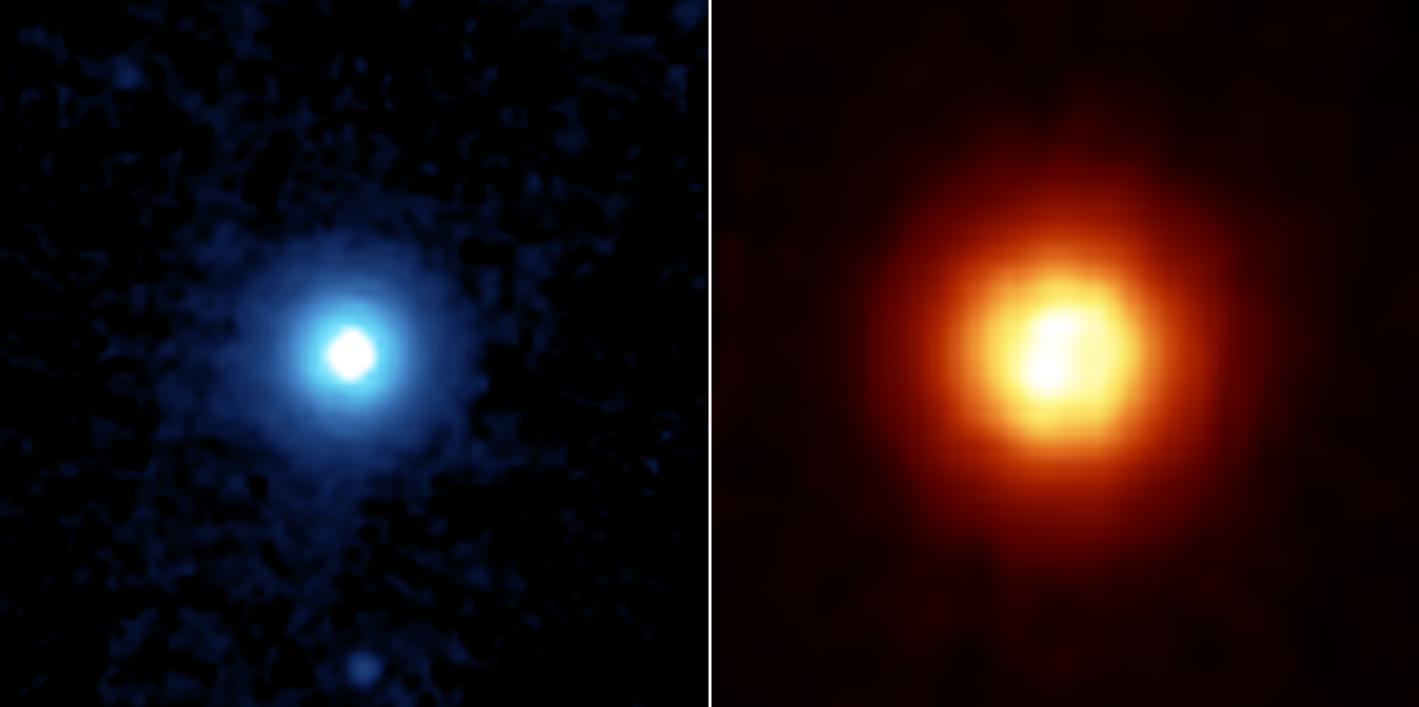Scorching-hot planet candidate spotted around famous star Vega
But the potential world still needs to be confirmed.

Astronomers have spotted a possible searing-hot planet orbiting Vega, one of the brightest and most famous stars in the sky.
The candidate alien planet, which still needs to be confirmed by follow-up observations or analyses, is roughly the size of Neptune and lies very close to Vega. It takes only 2.5 Earth days for the purported planet to make a single orbit around its sun.
Thanks to that proximity, the candidate planet's surface temperature is probably around 5,390 degrees Fahrenheit (2,976 degrees Celsius), researchers calculated. That would make it the second-hottest planet known, if it does indeed exist. (The hottest, KELT-9b, is a whopping 7,800 degrees Fahrenheit, or 4,300 degrees C.)
Related: The strangest alien planets (gallery)
Vega lies a mere 25 light-years from Earth and sits relatively high in the northern sky, so follow-up studies of this potential planetary system are a real possibility. Scientists will seek to confirm the Neptune-size world and also hunt for other possible planets around the famous star, which is in the constellation Lyra.
“This is a massive system, much larger than our own solar system," Spencer Hurt, the lead author of a new study announcing the Vega candidate planet, said in a statement.
"There could be other planets throughout that system," added Hurt, an undergraduate astronomy student at the University of Colorado, Boulder. "It's just a matter of whether we can detect them."
Get the Space.com Newsletter
Breaking space news, the latest updates on rocket launches, skywatching events and more!
Team members spotted the candidate planet after looking at about 10 years of data collected by the Fred Lawrence Whipple Observatory in Arizona. They saw a slight wobble in the star's motion, suggesting that an orbiting planet is tugging on it gravitationally.
Astronomers have been hunting for planets around Vega for many years. Back in 2013, astronomers announced evidence of a huge asteroid belt circling the star and expressed hope that the find may eventually lead the way to spotting planets. The discovery team added, however, that confirming planets may have to wait until after the launch of NASA's powerful James Webb Space Telescope, which is scheduled to launch this October.
That said, Vega is so bright that professional telescopes can see the star in the sky even when it's daylight, allowing for flexible observations. Hurt said he and his colleagues are hoping to find direct light emissions from the candidate planet in future studies, to confirm its existence.
Vegan planets and aliens are a staple of science fiction through the ages, ranging from Isaac Asimov's "Foundation" series (which began in 1951) to the "Star Trek: The Original Series" episode "The Cage" (created in 1965 and first aired in 1988) to the movies or television shows "Spaceballs" (1987), "Contact" (1997) and "Babylon 5" (1993-98), among many others.
Vega's appeal for science and science fiction is due in large part to its proximity to Earth. Twenty-five light-years is a small jaunt in cosmic terms, given that our Milky Way galaxy alone is roughly 100,000 light-years across. You can easily spot the star with the naked eye, and it rides high in the sky during the summer months of the northern hemisphere as part of the Summer Triangle asterism.
The new study was published March 2 in The Astrophysical Journal.
Follow Elizabeth Howell on Twitter @howellspace. Follow us on Twitter @Spacedotcom and on Facebook.
Join our Space Forums to keep talking space on the latest missions, night sky and more! And if you have a news tip, correction or comment, let us know at: community@space.com.

Elizabeth Howell (she/her), Ph.D., was a staff writer in the spaceflight channel between 2022 and 2024 specializing in Canadian space news. She was contributing writer for Space.com for 10 years from 2012 to 2024. Elizabeth's reporting includes multiple exclusives with the White House, leading world coverage about a lost-and-found space tomato on the International Space Station, witnessing five human spaceflight launches on two continents, flying parabolic, working inside a spacesuit, and participating in a simulated Mars mission. Her latest book, "Why Am I Taller?" (ECW Press, 2022) is co-written with astronaut Dave Williams.









